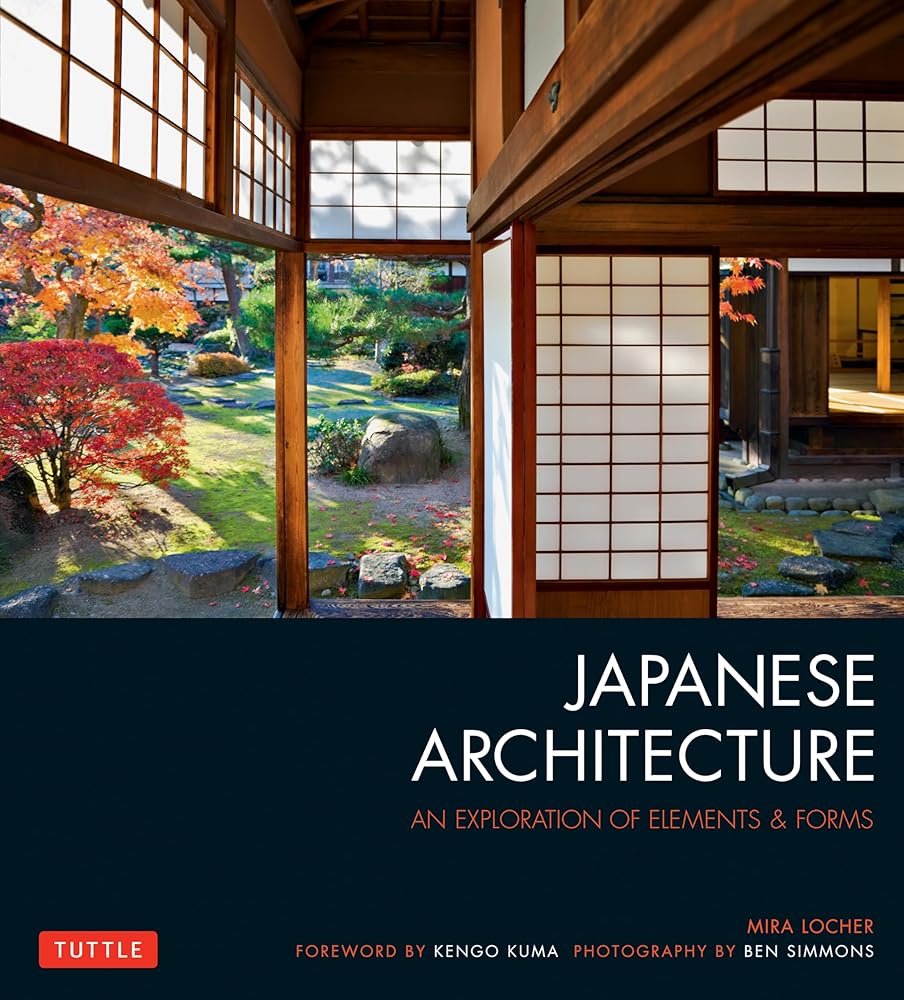
Japanese Architecture
By Mira Locher, Ben Simmons, and Kengo Kuma
Japanese Architecture: An Exploration of Elements & Forms
In Japanese Architecture, author Mira Locher explores how each of these stories encompasses the particular development, construction, function and symbolism inherent in historic architectural elements.
Japanese architecture developed with influences from abroad and particular socio-political situations at home. The resulting forms and construction materials—soaring roofs with long eaves, heavy timber structures of stout columns supporting thick beams, mud plaster walls flecked with straw and sand and the refined paper-covered lattice shoji screen—are recognizable as being of distinctly Japanese design. These constructed forms, designed with strong connections to the surrounding environment, utilize natural construction materials in ways that are both practical and inventive.
Year: 2015
Format: Paperback
Publisher: Tuttle Publishing
Categories: Regional Architecture, Residential Architecture, and Japanese History
Pages: 224
- $ 600.00
- $ 600.00
- Unit price
- per
Also recommended
- $ 600.00
- $ 600.00
- Unit price
- per
- $ 600.00
- $ 600.00
- Unit price
- per
- $ 600.00
- $ 600.00
- Unit price
- per
- $ 600.00
- $ 600.00
- Unit price
- per
- $ 600.00
- $ 600.00
- Unit price
- per
- $ 600.00
- $ 600.00
- Unit price
- per
- $ 600.00
- $ 600.00
- Unit price
- per
- $ 600.00
- $ 600.00
- Unit price
- per
- $ 600.00
- $ 600.00
- Unit price
- per
- $ 600.00
- $ 600.00
- Unit price
- per
Recently Viewed
- $ 600.00
- $ 600.00
- Unit price
- per
- $ 600.00
- $ 600.00
- Unit price
- per
- $ 600.00
- $ 600.00
- Unit price
- per
- $ 600.00
- $ 600.00
- Unit price
- per
- $ 600.00
- $ 600.00
- Unit price
- per
- $ 600.00
- $ 600.00
- Unit price
- per
- $ 600.00
- $ 600.00
- Unit price
- per
- $ 600.00
- $ 600.00
- Unit price
- per
- $ 600.00
- $ 600.00
- Unit price
- per
- $ 600.00
- $ 600.00
- Unit price
- per
- Choosing a selection results in a full page refresh.
